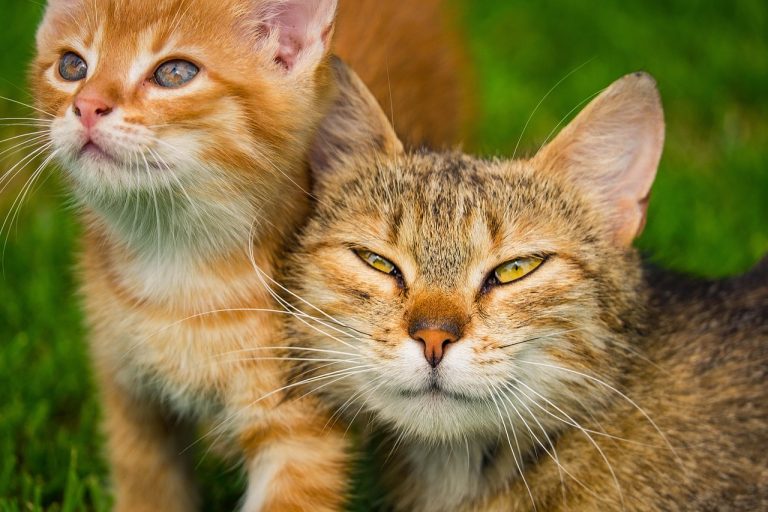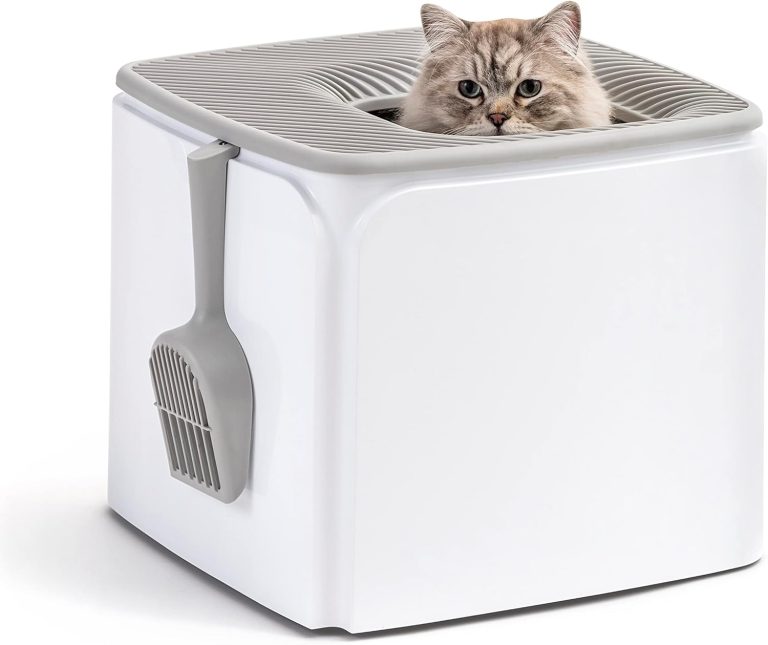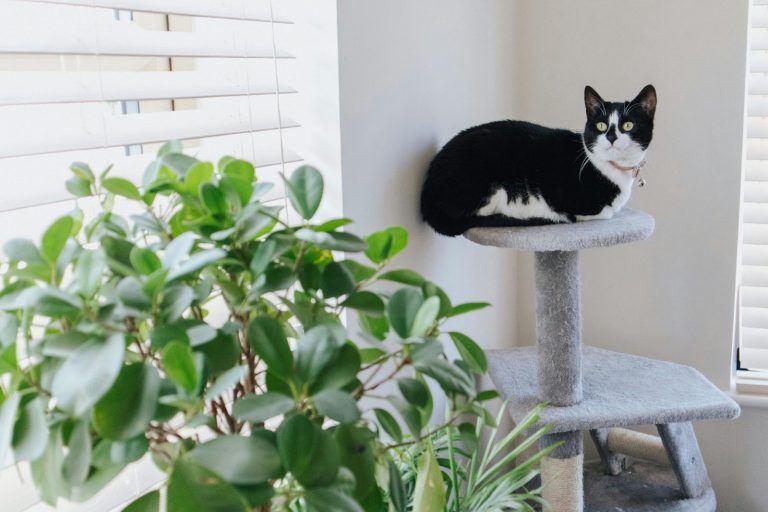Understanding The Obese Cat: Causes, Consequences, and Solutions
You may think your pet is healthy, but the veterinarian says otherwise. Here’s what you may be getting wrong.
This article on obesity in dogs and cats was written by veterinarians, Dr. Debora Lichtenberg, VMD, Dr. Pippa Elliott, BVMS, MRCVS, and Dr. Phil Zeltzman, DVM, DACVS, CVJ. As the author of the 2011 book Walk a Hound, Lose a Pound, Dr. Zeltzman has specific expertise in the area of pet obesity. This article was originally published in 2013 and is regularly updated. It was last reviewed for accuracy and updated on May 15, 2024.
If you have questions or concerns, call your vet, who is best equipped to ensure the health and well-being of your pet. This article is for informational purposes only and is not a substitute for professional medical advice, diagnosis, or treatment. See additional information.

- Introduction to Obese Cats
- Prevalence of Obesity in Cats
- Denial and Awareness Among Pet Parents
- Causes of Obesity in Cats
- The Consequences of Being an Obese Cat
- Identifying Obesity in Cats
- Treating and Preventing Obesity in Cats
- Understanding Treats and Emotional Feeding
- Reality Check
- Millennials and Pet Wellness
- Conclusion
- Frequently Asked Questions (FAQ)
- References

Don’t leave your pet’s safety to chance
Sign up for Petful recall alerts today.

Introduction to Obese Cats
Understanding Cat Obesity
You’re probably sick and tired of hearing about Americans’ pets being fat. In fact, you might have seen headlines like these:
- “The Obesity Pet Crisis in America”
- “Health Risks Associated With Overweight Pets”
- “How to Help Your Pets Lose Weight”
But know this: Being overweight is the most common health threat to dogs and cats, and it’s a medical concern of epidemic proportions.
Obesity in cats is defined as having excess body fat that can impair health, typically when a cat’s weight is 20% or more above its ideal weight. It leads to various health issues, including diabetes, arthritis, and heart disease, significantly affecting a cat’s quality of life and lifespan. Understanding and addressing cat obesity is crucial for ensuring the well-being of our feline companions.
For information on obesity in dogs, you can read our comprehensive article “Obese Dogs: Understanding and Managing Them”
Prevalence of Obesity in Cats
About 60% of Pets Are Overweight
According to a survey from the Association for Pet Obesity Prevention (APOP) that was published in 2019, an astounding 59.5% of cats and 55.8% of dogs are overweight or obese in the United States.
Even worse, the vast majority of pet parents are unaware their pets are overweight. “We’ve made fat pets the new normal,” says Dr. Ernie Ward, DVM, who is the founder of APOP and author of Chow Hounds: Why Our Dogs Are Getting Fatter.
This normalization of obesity (the “fat gap”) means most people don’t understand the potentially life-threatening health consequences that arise from their pet being overweight, such as:

Denial and Awareness Among Pet Parents
Pet Parents in Denial
Denial can lead to shock when a veterinarian tells a pet parent that their picture-perfect pet is actually overweight.
Our job as vets is not just telling clients about their pets’ weight and the consequences — but also convincing them that their 15-pound cat is not at a normal weight. Or that a normal Beagle does not weigh 50 pounds.
Our pets are overweight — and, yes, lots of us are, too. In fact, 71.6% of American adults are overweight or obese.
“It is likely that the [pet parent] feels a bit guilty that they are eating and their pet is not, so they reward the dog [or cat] with unearned and calorically unneeded treats. If this becomes a habitual form of behavior, the obvious result is a plump dog,” says Stanley Coren, PhD, DSc, FRSC, an expert in canine psychology.
During wellness exams with an overweight pet, veterinarians try to take it slow and get a feel for how the pet parent identifies with food, not only for themselves but also for their pet. No insults, but calm truth.
Causes of Obesity in Cats
Overfeeding and Poor Diet
Overfeeding and a poor diet are significant contributors to obesity in cats. Many cat owners provide excessive food portions or free-feed their pets, which leads to the consumption of more calories than needed. Additionally, a diet high in carbohydrates and low in essential nutrients can exacerbate weight gain. High-calorie treats and table scraps further compound the problem, making it difficult for cats to maintain a healthy weight. To prevent obesity, it is crucial to control portion sizes, provide nutritionally balanced food, and limit high-calorie treats
Lack of Exercise
A sedentary lifestyle is another major factor contributing to obesity in cats. Indoor cats, in particular, are prone to inactivity, which can lead to weight gain. Without regular physical activity, cats are unable to burn off the calories they consume, resulting in excess fat accumulation. Encouraging play and exercise through interactive toys, climbing structures, and regular playtime can help maintain a cat’s healthy weight. Aim for at least 30 minutes of exercise per day, split into short sessions to keep your cat active and engaged
Genetic Predispositions
Genetics can also play a role in a cat’s likelihood of becoming obese. Some cat breeds have a genetic predisposition to gain weight more easily than others. For example, certain breeds like the Maine Coon and Persian cats are more prone to obesity. Additionally, cats with a genetic tendency towards a slower metabolism or certain medical conditions may gain weight more quickly. Understanding your cat’s breed-specific risks and working closely with your veterinarian can help manage and mitigate these genetic factors
The Consequences of Being an Obese Cat
Diabetes
Oddly enough, obesity actually adds to more overt disease in cats than in dogs. Obese cats are far more prone to diabetes, an expensive and worrisome condition to treat.
Urinary Problems
Maintaining a good weight lowers your cat’s risk of lower urinary tract disease.
Normal-weight cats are more active, less stressed and have more enriched lives. Less stress, we believe, means fewer urinary tract problems.
Osteoarthritis
Similar to dogs, obese cats suffer from more arthritic pain than normal-weight cats.
Most arthritis is a degenerative condition found in aging cats. Think of older indoor cats who’ve munched on only dry food for the past 15 years:
- They are obese.
- They can’t reach their backs to groom.
- And they’re putting excess stress on every joint every time they jump down from the food bowl.
The brief answer is wet food instead of dry, as well as portion control and more exercise.
Subclinical Conditions
Cats can hide subclinical diseases very well. Pancreatitis, gastrointestinal disease and even early diabetes can go unnoticed for a while.
Get your cat back to a healthy weight before these conditions set in.
Poor Quality of Life — and a Shorter Life
Remember, we are the keepers of the pantry. We are to blame for putting our pets at risk from obesity.
Identifying Obesity in Cats
Cat Weight Chart
Understanding the ideal weight range for your cat is crucial in preventing obesity and maintaining overall health. Here is a general guide to average cat weights, highlighting what is considered underweight, healthy, overweight, and obese
Body Condition Score (BCS)
- BCS 1 indicates a cat that is extremely underweight, with ribs, spine, and hip bones easily visible and little to no body fat.
- BCS 5 represents a cat at a healthy weight, where ribs can be felt with a slight layer of fat, and there is a visible waist.
- BCS 9 indicates severe obesity, with ribs not palpable under a heavy layer of fat and noticeable fat deposits on various parts of the body.
Average Cat Weight Chart
- Underweight: Body Condition Score (BCS) 1-3
- Signs: Ribs, spine, and hip bones are easily visible. There is little to no body fat, and the cat may have a “wasp-waist” appearance from above.
- Healthy Weight: BCS 4-5
- Signs: Ribs can be felt but not easily seen. There is a slight waist behind the ribs when viewed from above, and the abdomen is tucked up behind the ribcage.
- Overweight: BCS 6-7
- Signs: Ribs are difficult to feel under a thick layer of fat. The waist is not clearly visible, and there is a rounding of the abdomen when viewed from the side.
- Obese: BCS 8-9
- Signs: Ribs cannot be felt under a heavy layer of fat. There is no waist, and the abdomen may be distended with noticeable fat deposits over the back and base of the tail.
Average Weight Ranges
- Small Breed Cats (e.g., Siamese, Cornish Rex):
- Healthy weight: 5-10 pounds
- Medium Breed Cats (e.g., Domestic Shorthair, Burmese):
- Healthy weight: 10-15 pounds
- Large Breed Cats (e.g., Maine Coon, Norwegian Forest Cat):
- Healthy weight: 15-20 pounds
These ranges can vary depending on the specific breed and individual cat’s body structure. It’s essential to consult with your veterinarian to determine the ideal weight for your cat and adjust their diet and exercise regimen accordingly.
Signs You Might Have an Obese Cat
Identifying obesity in cats involves observing both physical signs and behavioral changes. Here are key indicators that your cat might be overweight:
Physical Signs:
- Difficulty Feeling Ribs: When you can’t easily feel your cat’s ribs due to a thick layer of fat, it’s a strong indication of obesity.
- Lack of Waist: A healthy cat has a visible waist behind the ribs when viewed from above. If this waistline is not apparent, your cat might be overweight.
- Sagging Abdomen: Obese cats often develop a pronounced, sagging belly, known as a “primordial pouch.”
- Fat Deposits: Noticeable fat deposits over the back, base of the tail, and around the abdomen are signs of obesity.
Behavioral Changes:
- Decreased Activity: Obese cats tend to be less active and may show reluctance to play or exercise. They might also sleep more than usual.
- Difficulty Grooming: Overweight cats often struggle to groom themselves properly, leading to a dull, matted coat and poor hygiene.
- Breathing Issues: Heavy breathing, wheezing, or shortness of breath during minor activities can indicate excess weight.
- Reduced Mobility: Difficulty jumping onto furniture or climbing stairs is a common sign of obesity, as extra weight puts stress on the joints.
Treating and Preventing Obesity in Cats
Consult your veterinarian.
Dr. Carolyn McDaniel, VMD, of Cornell University’s College of Veterinary Medicine says that any weight-loss program “should be carried out under the direction of a veterinarian.”
“What you want to aim for is a gradual weight loss, perhaps 1–2% loss of body weight per week,” she says. Bring your dog or cat to the vet for a weigh-in. From there, discuss options for weight loss and get recommendations on what type of food would best fit your pet’s lifestyle.
The vet will take into account the breed, age and activity level.
Dietary Changes
Selecting healthier food options and controlling portions are crucial for managing cat obesity. Choose high-quality, balanced cat foods that are high in protein and low in carbohydrates, with wet foods often being a better option due to their higher moisture content.
Measure your cat’s food accurately and follow feeding guidelines or your veterinarian’s recommendations. Feed your cat at regular times instead of free-feeding to help regulate metabolism.
Limit treats to no more than 10% of daily calorie intake, opting for low-calorie options. Incorporate puzzle feeders or food-dispensing toys to slow down eating and provide mental stimulation. Always consult your veterinarian before making significant dietary changes to ensure they meet your cat’s specific health needs
Daily Calories for Cats
- An indoor cat needs 20 calories per 1 pound of body weight, and an outdoor cat almost twice as much, at 35 calories.
- Each piece of kibble contains around 2 to 3 calories. Put 60 kibble bits in a pile, and it doesn’t look much.
No Grazing
Dr. Elizabeth Hodgkins, DVM, author of Your Cat: Simple New Secrets to a Longer, Stronger Life, recommends wet food rather than dry for cats.
But perhaps more important, she says, is removing the all-you-can-eat buffet.
“Whatever wet food you choose for your cat, do not free-feed additional dry food alongside,” says Dr. Hodgkins. “Cats do not need to ‘graze’ on a constant basis as if they were cattle.”
Dr. Hodgkins adds: “Twice-daily meal feeding of wet food at about 3–4 ounces of food per meal simulates the cat’s free roaming feeding behaviors as closely as humanly possible and allows the cat to maintain a healthy adult weight throughout its life.”
Changing this behavior is the first step in helping your cat to lose weight.
Make Your Cat Work for Food
Consider making mealtime an interactive activity.
Instead of regular food bowls, try using puzzle feeders so the cat or dog learns the powerful lesson that “nothing in life is free” when it comes to food. Dry food works well in these circumstances.
Weigh out the daily allowance of food at breakfast time, load up the puzzle feeders, and hide small saucers around the house. Then leave your pet to it.
Do not Overfeed
This one seems relatively simple: We’re feeding our pets more than they need. Instead of just dumping food into the bowl, read the labels to see what the recommended servings are. Then use a measuring cup so portions are accurate.
Get More Exercise
- For cats, see our article “10 Fresh and Easy Ways to Exercise a Cat.”
- For dogs, see “How to Exercise Your Dog Anytime — Even in the Winter.”

Monitor Progress
Tracking and evaluating your cat’s weight loss progress is essential for ensuring their health and well-being. Start by weighing your cat regularly, ideally every two to three weeks, using a consistent method and the same scale to monitor changes accurately. Keep a record of their weight and note any fluctuations.
Observe physical changes such as a more defined waistline and improved ability to feel the ribs without excess fat. Behavioral changes like increased activity levels and ease of movement can also indicate progress.
Consult your veterinarian regularly to assess the effectiveness of the weight loss plan and make necessary adjustments. They can provide professional insights, perform body condition score (BCS) assessments, and ensure your cat’s diet and exercise regimen are appropriate and effective.
Regular follow-ups help maintain a structured approach and prevent potential health issues during the weight loss journey.
Understanding Treats and Emotional Feeding
How to Be Treat-Aware
Be wary of the hidden calories in treats.
In fact, why not measure out your pet’s daily allowance, and then save some in a container? Then you have the pleasure of giving a reward without piling on the pounds.
Or, even better, as Dr. Debora Lichtenberg, VMD, puts it: “Turn your back on the advertising. Turn your back on the impulse buy to bring home a treat for your pet. There are healthier alternatives. Open the refrigerator. Make your own! The majority of the treats are unhealthy, overpriced, cause obesity, and have no value.”
Give healthy treats, such as fresh vegetables: carrots, beans or broccoli. This may work better for dogs than cats, but you can certainly try.
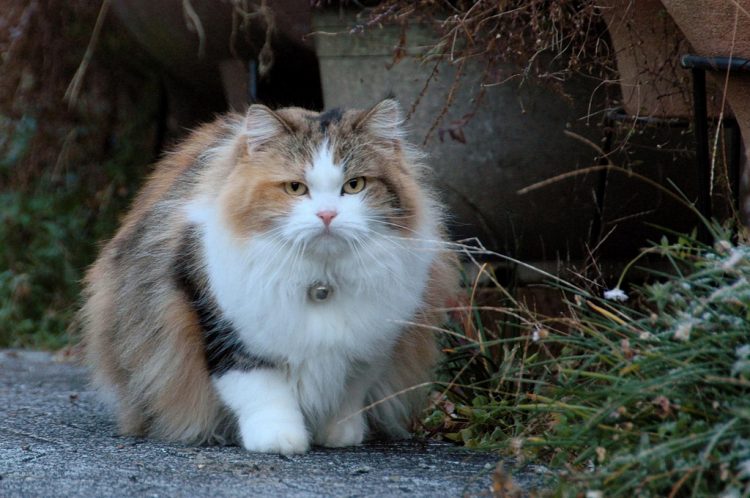
The Emotional Aspect of Feeding
Feeding your pet nourishes them, but it also nourishes you.
Americans have such a strong human-animal bond, and feeding pets signifies much more than a daily calorie count — it translates as love for many people.
But we’ve taken things too far.
If you’re in the mood for shock tactics, it turns out that a 1-ounce cube of cheddar cheese fed as a treat to a 20-pound dog is like giving them a cheeseburger.
It gets worse. For a cat, that same 1-ounce cube of cheese comes in at 2.5 cheeseburgers.
Reality Check
A veterinarian’s typical pet weight-loss talk addresses:
- Amounts of food
- Types of food
- Canned food for cats and no grazing
- Beginning mild-to-moderate exercise programs
- Going on a prescription diet
- “Weigh-in” appointments
- Computer-generated weight loss programs
When we tell our clients about correct nutrition, some go home and do whatever they want, but we’ve had some decent results with many overweight pets.
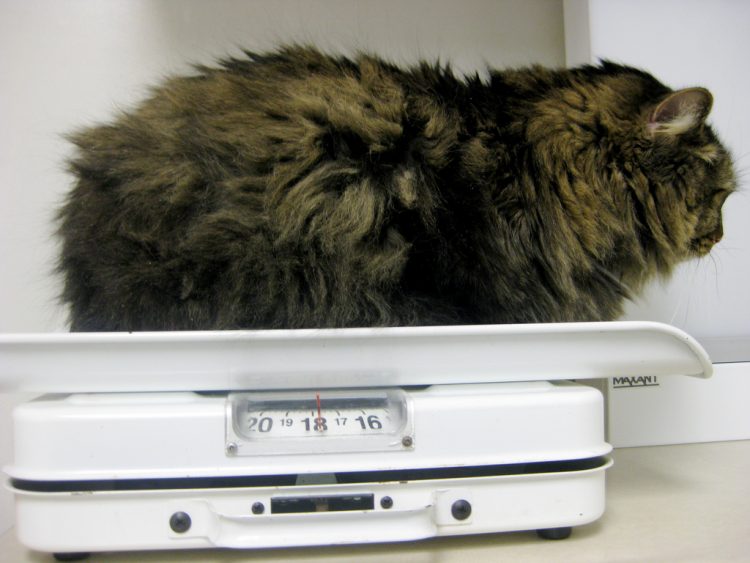
Millennials and Pet Wellness
Millennials Are Way Ahead of the Game
As a group, millennials seem more food-conscious, more exercise-conscious and more understanding of wellness medicine — plus, on the whole, they don’t let their younger pets get obese. Weight management is a lot easier if you don’t have to return to normalcy from obesity.
Our final thoughts? Eat well, eat healthy, and move both yourself and your pets. If you’re concerned that your pet may be overweight, please discuss it with your veterinarian. A proactive approach to diet and exercise can make a significant difference in your pet’s health and longevity.
Conclusion
Summary of Key Points
Understanding and managing obesity in cats involves recognizing the causes, such as overfeeding, poor diet, lack of exercise, and genetic predispositions. It’s important to be aware of the serious health consequences like diabetes, urinary problems, osteoarthritis, subclinical conditions, and reduced quality of life. Regularly monitor your cat’s weight and make necessary dietary and lifestyle changes under veterinary guidance. Implementing portion control, encouraging exercise, and being mindful of treat intake can significantly impact your cat’s health and longevity
Encouragement for Pet Owners
Managing your cat’s weight is a vital step towards ensuring a healthier, happier life for your furry friend. Small, consistent changes in diet and exercise can make a big difference. Remember, you’re not alone in this journey—veterinarians are there to help you with personalized advice and support. Stay committed, be patient, and celebrate the progress, no matter how small. Your efforts will lead to a healthier and more active cat, enriching both their life and yours
Frequently Asked Questions (FAQ)
How do you treat obesity in cats?
Treating obesity in cats involves a combination of portion control, feeding a high-protein, low-carb diet, increasing physical activity, and regular veterinary check-ups to monitor progress.
What’s considered obese for a cat?
A cat is considered obese if its body weight is 20% or more above its ideal weight, typically with a Body Condition Score (BCS) of 8-9 out of 9
Is 12 pounds overweight for a cat?
Whether 12 pounds is overweight for a cat depends on the breed and body structure, but generally, a domestic shorthair cat’s healthy weight ranges from 8-10 pounds, so 12 pounds may be considered overweight.
References
- “U.S. Pet Obesity Rates Plateau and Nutritional Confusion Grows.” Association for Pet Obesity Prevention. March 12, 2019. https://static1.squarespace.com/static/597c71d3e58c621d06830e3f/t/5c86da47c83025a824d387ae/1552341575308/2018+APOP+Survey+Press+Release.pdf.
- Bassam, Nahla. “About Those New Year’s Resolutions….” Foundation for Biomedical Research. Jan. 5, 2018. https://fbresearch.org/new-years-resolutions/.
- “Obesity and Overweight.” Centers for Disease Control and Prevention. https://www.cdc.gov/nchs/fastats/obesity-overweight.htm.
- Coren, Stanley, PhD, DSc, FRSC. “Overweight Pet Owners Are Likely to Have Overweight Dogs.” Psychology Today. July 24, 2019. https://www.psychologytoday.com/us/blog/canine-corner/201907/overweight-pet-owners-are-likely-have-overweight-dogs.
- Kealy, R.D., et al. “Effects of Diet Restriction on Life Span and Age-Related Changes in Dogs.” Journal of the American Veterinary Medical Association 220, no. 9 (May 2002): 1315–1320. https://avmajournals.avma.org/doi/abs/10.2460/javma.2002.220.1315.
- “Purina Study Confirms Link Between Body Fat and Chronic Health Conditions.” Purina. September 30, 2003.
- Zeltzman, Phil, DVM, DACVS, CVJ, and Rebecca A. Johnson, PhD, RN, FAAN. Walk a Hound, Lose a Pound: How You and Your Dog Can Lose Weight, Stay Fit and Have Fun Together. Purdue University Press. 2011. 49. https://books.google.com/books?id=Fh3ZJkUNPFcC&pg=PA49#v=onepage&q&f=false.
- Linder, Deborah, DVM, DACVN, “Top 5 Clinical Consequences of Obesity,” Clinician’s Brief 12, no. 2. (February 2014). http://www.cliniciansbrief.com/article/top-5-clinical-consequences-obesity.
- Williams, Krista, DVM, and Ernest Ward, DVM. “Creating a Weight Reduction Plan for Cats.” VCA Hospitals. https://vcahospitals.com/know-your-pet/creating-a-weight-reduction-plan-for-cats.
- “Obesity.” Cornell Feline Health Center of the Cornell University College of Veterinary Medicine. 2016. https://www.vet.cornell.edu/departments-centers-and-institutes/cornell-feline-health-center/health-information/feline-health-topics/obesity.
- Hodgkins, Elizabeth, DVM. Your Cat: Simple New Secrets to a Longer, Stronger Life. Macmillan. 2008. 119.

